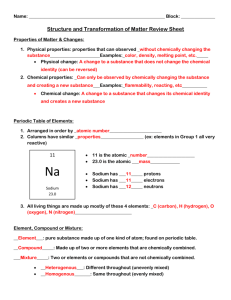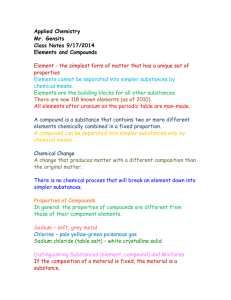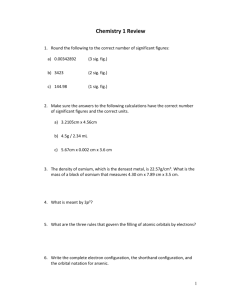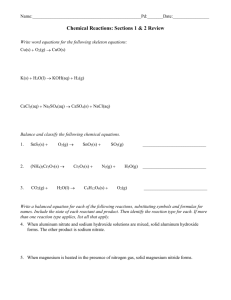File
advertisement
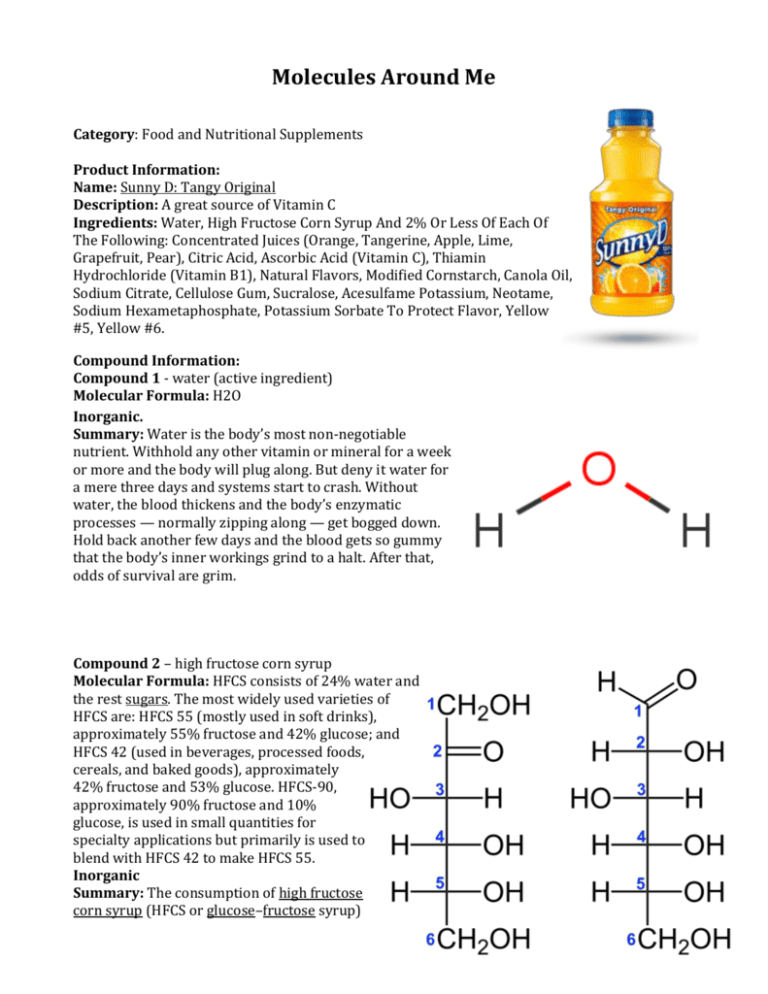
Molecules Around Me Category: Food and Nutritional Supplements Product Information: Name: Sunny D: Tangy Original Description: A great source of Vitamin C Ingredients: Water, High Fructose Corn Syrup And 2% Or Less Of Each Of The Following: Concentrated Juices (Orange, Tangerine, Apple, Lime, Grapefruit, Pear), Citric Acid, Ascorbic Acid (Vitamin C), Thiamin Hydrochloride (Vitamin B1), Natural Flavors, Modified Cornstarch, Canola Oil, Sodium Citrate, Cellulose Gum, Sucralose, Acesulfame Potassium, Neotame, Sodium Hexametaphosphate, Potassium Sorbate To Protect Flavor, Yellow #5, Yellow #6. Compound Information: Compound 1 - water (active ingredient) Molecular Formula: H2O Inorganic. Summary: Water is the body’s most non-negotiable nutrient. Withhold any other vitamin or mineral for a week or more and the body will plug along. But deny it water for a mere three days and systems start to crash. Without water, the blood thickens and the body’s enzymatic processes — normally zipping along — get bogged down. Hold back another few days and the blood gets so gummy that the body’s inner workings grind to a halt. After that, odds of survival are grim. Compound 2 – high fructose corn syrup Molecular Formula: HFCS consists of 24% water and the rest sugars. The most widely used varieties of HFCS are: HFCS 55 (mostly used in soft drinks), approximately 55% fructose and 42% glucose; and HFCS 42 (used in beverages, processed foods, cereals, and baked goods), approximately 42% fructose and 53% glucose. HFCS-90, approximately 90% fructose and 10% glucose, is used in small quantities for specialty applications but primarily is used to blend with HFCS 42 to make HFCS 55. Inorganic Summary: The consumption of high fructose corn syrup (HFCS or glucose–fructose syrup) and its relationship to a healthy diet is a subject of investigation. Evidence does not indicate it is less healthy than sugar consumption in general. Concerns center around excessive sugar intake and its contribution to obesity, type-2 diabetes, metabolic syndrome, and cardiovascular disease. The term high fructose corn syrup was developed to distinguish it from all-glucose corn syrups that existed in the past, and does not accurately describe the composition of the syrup (which is composed of a mixture of 42-55% fructose, 41-45% glucose and 0-5% glucose polymers depending on the specific blend). In the 1980s it replaced sucrose as the main sweetener of soft drinks in the United States. Sucrose is a disaccharide that when consumed, is Hydrolysed into 50% glucose and 50% fructose. Rates of obesity subsequently rose, paralleling an increase in the consumption of soft drinks in general, but have not been linked to the usage of HFCS. Compound 3 – Thiamine Hydrochloride (Vitamin B1) Molecular Formula: C12H17N4OS Organic because contains carbon Summary: Thiamin (also spelled "thiamine") is a water-soluble Bcomplex vitamin, previously known as vitamin B1 or aneurine. Thiamin was isolated and characterized in the 1920s, and thus was one of the first organic compounds to be recognized as a vitamin. Thiamin is involved in numerous body functions, including: nervous system and muscle functioning; flow of electrolytes in and out of nerve and muscle cells (through ion channels); multiple enzyme processes (via the coenzyme thiamine pyrophosphate); carbohydrate metabolism; and production of hydrochloric acid (which is necessary for proper digestion). Because there is very little thiamin stored in the body, depletion can occur as quickly as within 14 days. Severe chronic thiamine deficiency (beriberi) can result in potentially serious complications involving the nervous system/brain, muscles, heart, and gastrointestinal system. Dietary sources of thiamin include beef, brewer's yeast, legumes (beans, lentils), milk, nuts, oats, oranges, pork, rice, seeds, wheat, whole grain cereals, and yeast. In industrialized countries, foods made with white rice or white flour are often fortified with thiamine (because most of the naturally occurring thiamin is lost during the refinement process). Compound 4 - Modified CornStarch Molecular Formula: C27H48O20 Organic because it contains Carbon Summary: Modified corn starch is a food additive which is created by treating starch, causing the starch to be partially degraded. Modified corn starch can be used as a stabilizer, thickening agent, or an emulsifier. Starches may be modified to change texture of a food, increase their stability, decrease viscosity, or to lengthen or shorten gelatinization time. Compound 5 - Sucralose Molecular Formula: C12H19Cl3O8 Organic because it contains Carbon Summary: Sucralose adds sweetness to foods beverages without adding calories or carbohydrates. As an alternative to sugar and other calorie-containing sweeteners, it can role in weight management programs that sensible nutrition and physical activity. Category: Healthcare and Medicinal Products Product information: Name: Yoli Alkalete - PH Balance Description: Reduces Swelling and inflammation, Eliminates Acid Indigestion, Boosts Energy and Endurance, Increases Muscle Strength, and Relieves Pain. Ingredients: Calcium Carbonate, Potassium Hydroxide, Potassium Chloride, Magnesium Hydroxide, Magnesium Stearate, and Silicon Dioxide and play a combine Compound 1 - Calcium Carbonate Molecular Formula: CaCO3 Organic because it contains Carbon. Summary: Generally the substance is used in industrial and / or professional settings. The substance is contained in consumer products like fertilizers and fillers. The downstream user uses the substance as an intermediate to produce other substances like Calcium oxide, Calcium dihydroxide, Calcium magnesium oxide, Dolomite calcined and Lime hydraulic. Compound 2 - Potassium Hydroxide Molecular Formula: KOH Inorganic Summary: It is a strong alkaline chemical which is available in pellets and flakes. Also known as potassium hydrate and caustic potash, this chemical is commonly used in the diagnosis ad treatment of fungal infections in skin, hair and nails. It is also used as bleach and in the production of soaps, dyes, alkaline batteries, and many potassium compounds. The compound can be found in pure form by reacting sodium hydroxide with impure potassium. Compound 3 - Magnesium Hydroxide Molecular Formula:Mg(OH)2 Inorganic Summary: As a suspension in water, it is often called milk of magnesia because of its milk-like appearance. The solid mineral form of magnesium hydroxide is known as brucite. Magnesium hydroxide is a common component of antacids and laxatives; it interferes with the absorption of folic acid and iron. Magnesium hydroxide has a low solubility in water, with a Ksp of 1.5×10−11. Compound 4 - Magnesium Stearate Molecular Formula: Mg(C18H35O2)2 Organic because it contains Carbon. Summary: Magnesium stearate is often used as an anti-adherent in the manufacture of medical tablets, capsules and powders. In this regard, the substance is also useful, because it has lubricating properties, preventing ingredients from sticking to manufacturing equipment during the compression of chemical powders into solid tablets; magnesium stearate is the most commonly used lubricant for tablets. Studies have shown that magnesium stearate may affect the release time of the active ingredients in tablets, etc., but not that it reduces the overall bioavailability of those ingredients. As a food additive or pharmaceutical excipient, its E number is E470b. Compound 5 - Silicon Dioxide Molecular Formula: SiO2 Inorganic Summary: Silicon dioxide is obtained by mining and purification of the resulting mineral. Quartz comprises more than 10% by mass of the earth's crust. It is also produced, almost always via the processing of quartz, synthetically on a very large scale. An estimated 95% of silicon dioxide produced is consumed in the construction industry, e.g. for the production of Portland cement. Category: Personal Hygiene And Cleaning Product Name: Clorox Regular-Bleach Description: Clorox® Regular-Bleach packs the whitening and dirt-fighting power you demand, all in a smaller, easy-touse package. Plus it disinfects to kill 99.9% of germs and bacteria, which is kinda awesome. Ingredients: Water, Sodium Hypochlorite, Sodium Chloride, Sodium Carbonate, Sodium Chlorate, Sodium Hydroxide, and Sodium Polyacrylate. Compound Information: Compound 1 - Sodium Hypochlorite Molecular Formula: NaClO Inorganic Summary: Sodium hypochlorite is an essential ingredient in bleach and a variety of cleaning products, serving different functions depending on the concentration level and product formulation. For example, in Clorox's EPA-registered disinfecting and sanitizing products, sodium hypochlorite is the active ingredient that helps to kill certain germs. In laundry and cleaning products it can help clean, remove stains and whiten. In Liquid Plumr® products, it helps break down tough clogs. Compound 2 - Sodium Chloride Molecular Formula: NaCl Inorganic Summary: Sodium chloride is also known as table salt and rock salt. It is commonly used in detergents, hand dish soaps, liquid laundry soaps and fabric softeners to thicken and stabilize formulas. Compound 3 - Sodium Carbonate Molecular Formula: Na2CO3 Organic because it contains Carbon Summary: Sodium carbonate, also known as washing soda and soda ash, is an alkalinity builder, which is added to laundry detergents to improve cleaning efficiency. It also helps remove alcohol and grease stains from clothing. Compound 4 - Sodium Chlorate Molecular Formula: NaClO3 Inorganic Summary: Sodium chlorate is one of the substances that results from the natural breakdown of sodium hypochlorite bleach. It further breaks down into sodium chloride (table salt) and oxygen. Compound 5 - Sodium Hydroxide Molecular Formula: NaOH Inorganic Summary: Sodium hydroxide, also known as caustic soda or lye, is used as a pH adjuster in cleaning products. As an alkali, it is useful in cleaning products for removing soils that are fatty, oily or acidic. References -Wikipedia.com -Google.com

